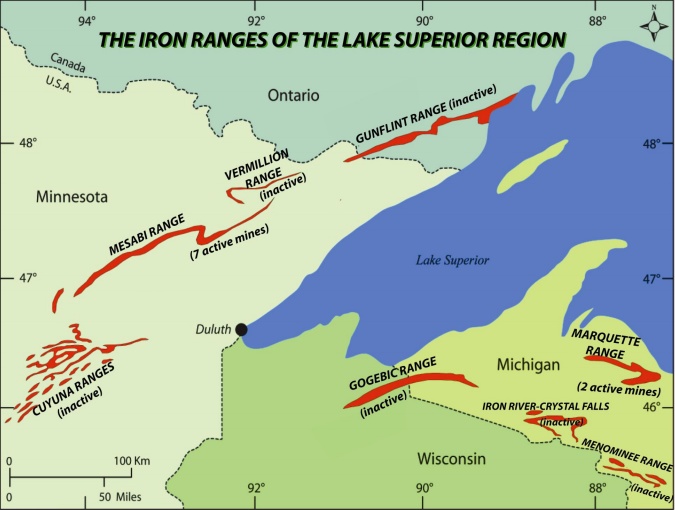From entertainment to cell phones to oil and gas, companies are scrambling to revamp business strategies to align with changing market conditions
With oil prices half of what they were a year ago, energy CFOs on six continents are in overdrive sharpening their pencils, but forced adaptation to long term market changes is happening across all sectors.
What’s on TV?
 In the entertainment sector, Netflix (ticker: NFLX), DISH Network (ticker: DISH) and HBO (ticker: TWX) have all made the change from simply delivering other studios’ Hollywood content to creating and delivering their own Hollywood content for their own end users. Frequently when you start to view a movie or a new TV series on Netflix you will be informed by the opening titles that you’re watching a “Netflix Original” series or movie. But simply showing others’ content is limiting and today’s customer-centric entertainment delivery companies want to create the product that they are delivering.
In the entertainment sector, Netflix (ticker: NFLX), DISH Network (ticker: DISH) and HBO (ticker: TWX) have all made the change from simply delivering other studios’ Hollywood content to creating and delivering their own Hollywood content for their own end users. Frequently when you start to view a movie or a new TV series on Netflix you will be informed by the opening titles that you’re watching a “Netflix Original” series or movie. But simply showing others’ content is limiting and today’s customer-centric entertainment delivery companies want to create the product that they are delivering.
No Longer a Group of Stodgy A.M. Radio Stations, We’re a Digital Entertainment Platform
 Clear Channel Communications, the U.S.’s largest owner of radio stations, is a great example of a legacy business model (owning and managing radio stations) that has re-invented itself to meet shifting preferences caused by new technologies and new customer attitudes toward how people like to interact with entertainment. In fact, the company made so many changes that last fall Clear Channel changed its name and corporate identity to mirror the success of its highly popular, on-the-go digital radio app, iHeartRadio. The name of the parent company changed from CC Media Holdings Inc. (ticker: CCMO) to iHeartMedia Inc. Its stock now trades under the symbol IHRT.
Clear Channel Communications, the U.S.’s largest owner of radio stations, is a great example of a legacy business model (owning and managing radio stations) that has re-invented itself to meet shifting preferences caused by new technologies and new customer attitudes toward how people like to interact with entertainment. In fact, the company made so many changes that last fall Clear Channel changed its name and corporate identity to mirror the success of its highly popular, on-the-go digital radio app, iHeartRadio. The name of the parent company changed from CC Media Holdings Inc. (ticker: CCMO) to iHeartMedia Inc. Its stock now trades under the symbol IHRT.
“It’s a recognition of who we really are today and the transformation this company has made,” CEO Bob Pittman said in an interview. “We have a company that’s doing progressive stuff, and yet we’re named after AM radio stations,” Pittman said about Clear Channel’s revamped business model and subsequent name change. “Since its 2008 launch, iHeartRadio has amassed 50 million registered users,” the LA Times reported in September.
Change or Go Kaput
Some businesses that can’t or won’t adjust to new circumstances wake up to find that they’ve been flattened by the steamroller of change—Borders bookstores is one example. Radio Shack is another legacy retailer that has had a lot of trouble trying to force its 94-year-old business model into the consciousness of today’s digitally connected, earbud wearing, Genius Bar-frequenting gadget consumer. In February the company filed for bankruptcy protection. In April, the company’s remaining 1,743 retail outlets were acquired by General Wireless Inc.
Remember the days of the “Crackberry”? Even President Obama famously said they’d have to pry his Blackberry out of his hand. For years, the iconic Blackberry owned the business side of the mobile phone marketplace. But Research in Motion (ticker: RIM), maker of the Blackberry, which peaked at 20,000 employees and a market value of $80 billion, is still struggling to fit itself into today’s market, long after Apple’s iPhone and other smart phone makers overtook the mobile phone industry with a tsunami of “cooler,” more full-featured products that strongly appeal to both consumer and business consumers. Business buyers moved over en masse.
Self-serve Internet Enrollment is Less Costly, More Effective than Human Recruiters
For-profit higher education chain Apollo Education Group (ticker: APOL), parent company of the University of Phoenix group of schools, said it is laying off 900 workers to meet its new online-focused business model. Apollo CEO Greg Cappelli said the company was “embarking on a transformative endeavor” to rebuild the University of Phoenix as a leader in online education.
“Many of the people who lost their jobs were student recruiters. Now Apollo is focusing on efforts to allow students to sign up for classes online, eliminating the need to interact with student recruiters,” a company spokesman told the Phoenix Business Journal. “Millennials today feel more comfortable with their phones, tablets, and laptops,” he said.
Growing Customer Loyalty with Personalized Interactive Web Portal
122-year-old U.S. retail staple Sears, Roebuck and Co. (now Sears Holdings, ticker: SHLD) is another iconic brand that has struggled to find its way amid vast changes to its market place. This week Sears announced that it had hired Gymboree (ticker: GYMB) Chief Operating Officer Joelle Maher to be president and chief member officer of its Sears stores, according to the Chicago Tribune. “In the newly created role, she will oversee the operation of Sears retail stores and develop strategies to improve the performance of Shop Your Way, a loyalty program that accounts for most of the struggling chain’s sales.”
“The retailer has seen its sales decline since hedge fund manager Lampert combined Sears and Kmart in an $11 billion deal in 2005. The company reported losses of $1.7 billion last year, with revenue declining nearly 14 percent to $31.2 billion.”
 Shop Your Way features an image-heavy web portal for Sears customers that offers opportunities to “discover millions of products,” create your own catalog, “connect with friends,” get advice, get a personal shopper, “chat with a pro,” and earn and collect rewards.
Shop Your Way features an image-heavy web portal for Sears customers that offers opportunities to “discover millions of products,” create your own catalog, “connect with friends,” get advice, get a personal shopper, “chat with a pro,” and earn and collect rewards.
“Shop Your Way offers lower prices and rewards to a membership in the ‘tens of millions’, the company said. The free program accounted for 74 percent of Sears and Kmart sales in the first quarter and is an integral part of the retailers’ strategy,” the Tribune reported.
Attention IBM Sales Force: Please Toss your Blue Suit into the Recycle Bin
IBM (ticker: IBM), which just celebrated its 96th birthday in June, has looked hard at how it addresses prospects. End result: it has redesigned its concept of ‘salesman’.
“The iconic guy in a blue suit, white shirt and tie, looking optimistic because they’re about to go kill it is an artifact from a different world,” IBM VP of Marketing Innovation and Platforms Ben Edwards told an audience at a recent conference. “Today, our data tells us that 70% of the client journey happens before the sales call.”
Edwards says the function of marketing is creating opportunity for potential clients to “take the step toward the point of sale.” To do that, IBM is focusing on engaging its current client base to convert its current customers into brand advocates.
Minnesota Iron Producers Forced to Make a New Form of Iron
Iron ore customers are shifting away from traditional taconite pellets. After 1,000 mineworkers were laid off from companies mining iron ore in Minnesota’s Iron Range, the industry has learned that it’s time to begin producing a new kind of iron to accommodate today’s changing customer preferences.
 According to a report by Minnesota Public Radio, the customers—steel companies—have moved toward electric arc furnaces, which use scrap metal or a more pure form of iron than Minnesota’s taconite pellets, the fuel of choice for several decades. The electric arc furnaces are more efficient than blast furnaces.
According to a report by Minnesota Public Radio, the customers—steel companies—have moved toward electric arc furnaces, which use scrap metal or a more pure form of iron than Minnesota’s taconite pellets, the fuel of choice for several decades. The electric arc furnaces are more efficient than blast furnaces.
“The growing part of the market is the electric furnace market, so you have to be looking to where your customer is going and make sure you provide a product that they can use,” industry spokesman Brian Hiti, a senior policy adviser on mining for the Iron Range Resources and Rehabilitation Board, told MPR.
Natural Gas Could Help Save Minnesota’s Iron Ore Industry
“The problem isn’t the tonnage of ore available,” Hiti said. “We’ve got plenty of ore available. The challenge is making sure that it’s produced in a form that the customer wants.”
“A lot of natural gas is required to turn low grade iron ore into direct reduced iron and Minnesota, which has North America’s largest deposits of iron ore, is very near to new supplies of gas in North Dakota and Canada,” MPR reports.
Cleveland based Cliffs Natural Resources (ticker: CLF) is one of the larger producers of iron ore pellets in North America with mines in Minnesota and Michigan. According to the Minnesota Department of Natural Resources, the Cliffs Natural Resources Minnesota mines have the combined annual capacity to produce 18.2 million tons of iron ore pellets annually.
Pickup Trucks Getting Lighter
The other factor worrying the Minnesota iron ore industry is Ford’s decision to make its flagship F-150 pickup truck using aluminum truck bodies. Experts say Ford’s decision to go to aluminum will displace about 500,000 tons of iron ore pellets a year, shifting away from steel into aluminum.
“If other trucks go that way because of the highway fuel economy standards, you could displace another 1.8 million tons very easily in model year 2018, 2019,” Don Fosnacht, a metallurgical engineer at the Natural Resources Research Institute at the University of Minnesota told MPR. “You know these things aren’t going to just go away. They’re actually big time events that will dramatically impact our iron ore industry. So we have to be nimble on our feet. … How are we going to address them to have a viable industry for the future?”
Producing More Oil while Drilling Fewer Wells
Today’s lower commodities prices have forced oil and gas producers to find new strategies to slice costs from the barrels of oil they produce. Many producers and the oil service companies working with them to extract the hydrocarbons have learned how to drill wells in far less time than it was taking them just a year or two ago. Efficiencies created by drilling multiple horizontal wells on a single pad have driven tremendous cost savings.
Capitalizing on increased efficiencies, shorter drilling days and wells exceeding type curves have combined to prompt Sanchez Energy (ticker: SN) to upwardly revise production guidance for the second straight quarter. The company said in an operations update on July 15, 2015 that current volumes are the highest in company history.
“This improvement in productivity has allowed us to put online additional wells in the first half of 2015 without spending additional capital beyond the budget or increasing the number of drilling rigs working on our assets,” Tony Sanchez III, president and chief executive officer of Sanchez Energy, said in a press release.
Other oil and gas producers across the shale basins have reported similar successes via increases in efficiencies. Often in the shale plays, significantly higher rates of production have been achieved by experimenting with well drilling and completion techniques—length of laterals, number of frac stages, amount of sand, fluid recipes, and the like.
Whiting Petroleum (ticker: WLL) Chief Operating Officer Mark Williams put it this way in a talk he gave at the American Association of Petroleum Geologists’ 2015 national convention:
“We really had to sharpen our pencils with respect to how to do the completions,” Williams told the audience. His presentation spent considerable time discussing how from 2011 – 2013 Whiting did plenty of experimenting on how to best complete the wells. He said they did a lot of packer completions before 2012, but between 2012-2014 they began using cemented liners and slickwater fracs. “We saw a significant uplift with slickwater fracs,” but he emphasized that every completion could be customized, and that completions in the Bakken are different from the Three Forks formation.
He said that one thing his team found to be consistent was a “firm, strong correlation between higher volumes of sand and better production … which means higher volumes of water, higher horsepower and using slickwater to move the proppant, and keeping the sand in suspension using small proppant size.”
Should Five Percent Appear Too Small
And then there’s the public sector’s remedy for falling revenues: when the money dries up, you just increase taxes. Chicago did that yesterday to its sales tax rate—bumped it all the way to 10.25%.
 “Cook County commissioners narrowly approved a 1-percentage-point sales tax increase … follow[ing] several hours of testimony and debate over the tax hike, which will push the rate in Chicago back among the nation’s highest at 10.25 percent,” the Chicago Tribune reported.
“Cook County commissioners narrowly approved a 1-percentage-point sales tax increase … follow[ing] several hours of testimony and debate over the tax hike, which will push the rate in Chicago back among the nation’s highest at 10.25 percent,” the Chicago Tribune reported.
Cook County has bills to pay and not enough money to pay them, but what will be the long term effects of upping taxes?
The National Bureau of Economic Research reports that tax increases reduce GDP: “Tax changes have very large effects: an exogenous tax increase of 1 percent of GDP lowers real GDP by roughly 2 to 3 percent.” Maybe Boeing (ticker: BA) will move its HQ to Dallas or Denver after all.





